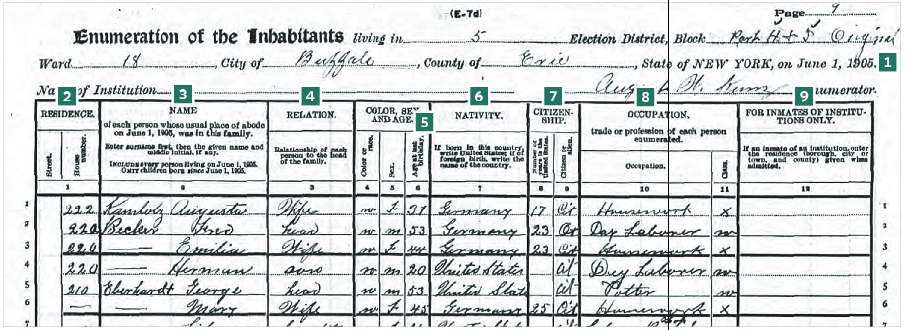Sign up for the Family Tree Newsletter Plus, you’ll receive our 10 Essential Genealogy Research Forms PDF as a special thank you!
Get Your Free Genealogy Forms
"*" indicates required fields
Most state and territorial censuses have survived in whole or in part, and are held in state archives. Many of these records have been microfilmed, digitized and made searchable online at sites such as the free FamilySearch and fee-based Ancestry.com, Findmypast and MyHeritage. You can get an overview of state censuses taken and what records survive in State Census Records by Ann S. Lainhart (Genealogical Publishing Co.). As a bonus, state censuses aren’t subject to the 72-year privacy rule that applies to federal censuses. If you have Florida ancestors, for example, you might find them in the Sunshine State’s 1945 census. New York’s 1905 census, shown here, is typical of non-federal censuses, and is available with other New York censuses on FamilySearch and Ancestry.com.
- This New York state census was to list all inhabitants as of June 1905. Each page describes the area being enumerated, including the election district and ward.
- Use the street name and house number to help you locate property and tax records for homeowners.
- As with federal censuses, the enumerator may have visited a family before or after the official census date. Children born later than June 1 were to be omitted; those who died after June 1 should be included.
- Earlier censuses may lack a column for the relationship of each person to the head of the household. In those cases, take care not to assume relationships: Households often included extended family, stepchildren or boarders.
- Comparing a person’s age to the enumeration dates on all the census documents you’ve found can help you narrow the year and even month of birth.

6. Census enumerators were usually instructed to ask for the current name of a foreigner’s native country, which may differ from that country’s name when he was born.
7. Citizens born abroad were asked the number of years they’d lived in the United States. This points to an immigrant’s year of arrival and should prompt your research into naturalization records.
8. The person’s regular occupation is followed with a class designation. A W indicates the individual worked for a wage or salary; an X means the person wasn’t paid.
9. This column was reserved for those in residential facilities such as boarding schools, hospitals, asylums, jails or prisons. In this case, the person’s place of residence when admitted was to be noted, useful for identifying institutionalized relatives.
ADVERTISEMENT
